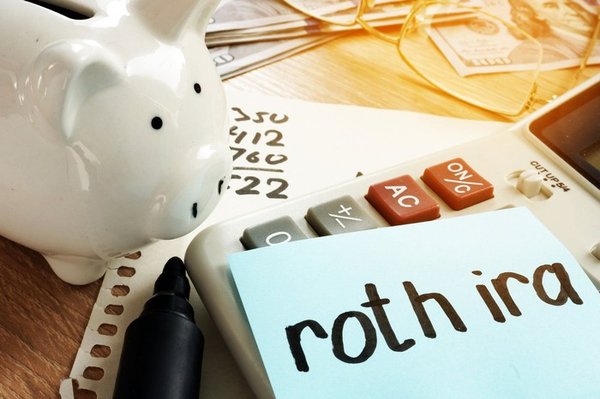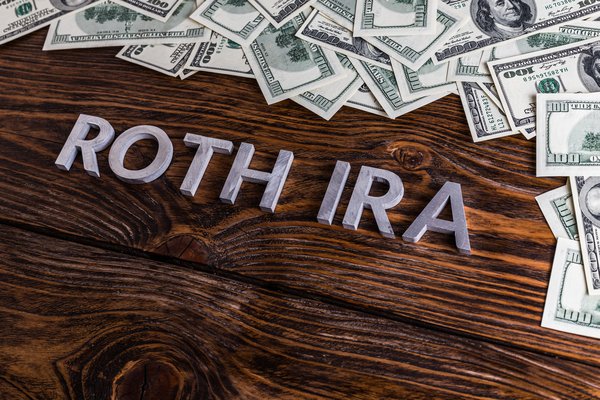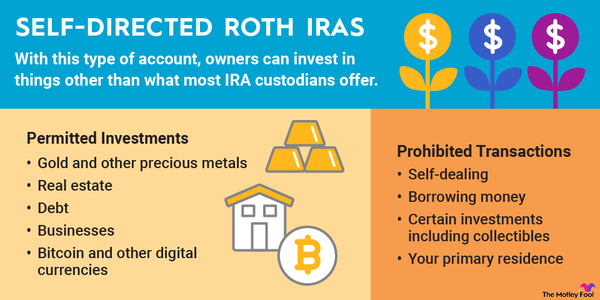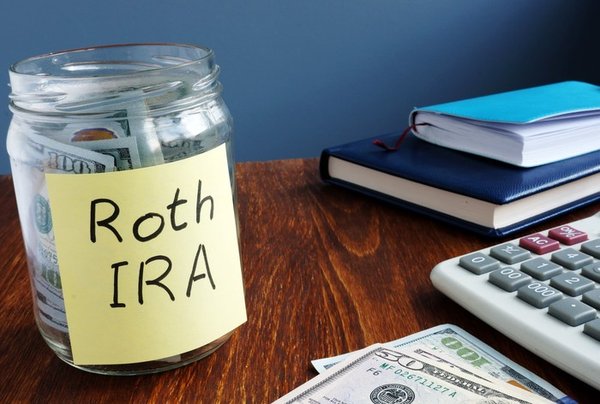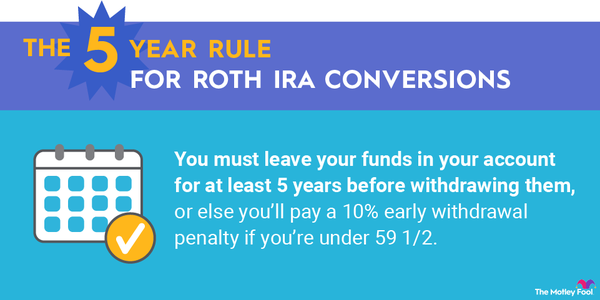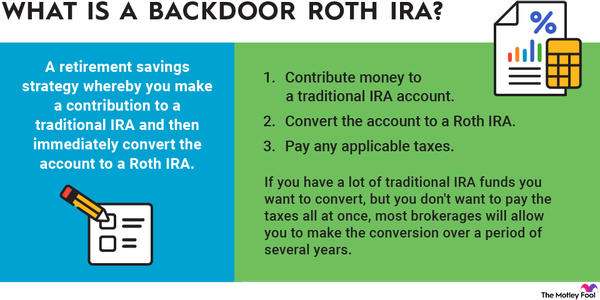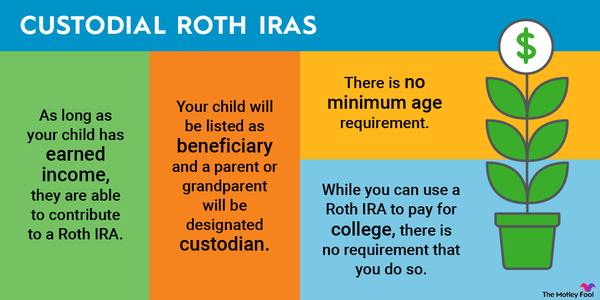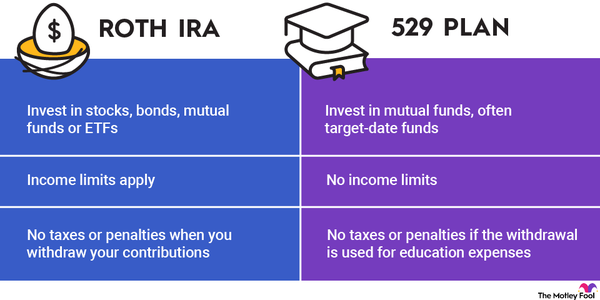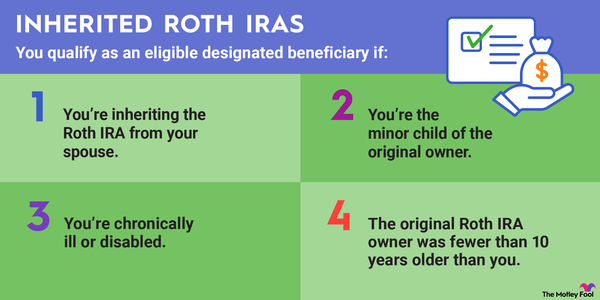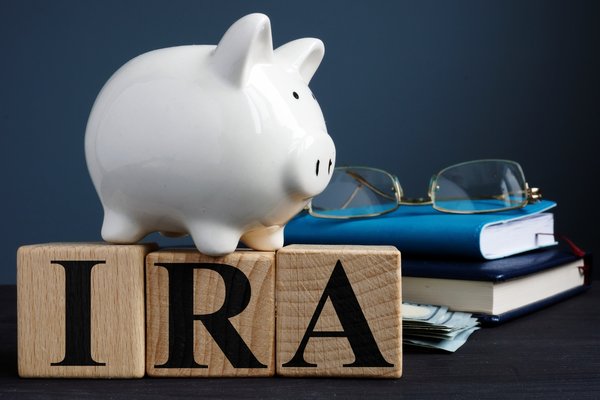Roth IRAs are a great tool to help you save more for retirement. Unlike its traditional IRA counterpart, a Roth IRA doesn't offer a tax deduction up front. Instead, account holders pay taxes on their contributions the year they're made but don't pay any taxes on the growth or withdrawals in retirement.
Hopefully you're able to withdraw much more than you contribute to your Roth IRA, but that all depends on what kind of returns you can manage in the account.

How a Roth IRA earns interest
A Roth IRA increases in value only if you invest the money you contribute. Investing allows your contributions to earn compound interest over time. Compounding occurs when your money earns you more money, which, in turn, earns you even more money.
For example, if you invest $1,000 in your Roth IRA in a certificate of deposit earning 2% per year, you'll earn $20 in interest that first year. If you reinvest that $20 and your original $1,000, you'll earn $20.40 in the second year, bringing your total account balance to $1,040.40. Every year, you'll earn more and more interest. That doesn't sound like much at first, but over the length of a career, compounding can be very powerful.
Most custodians place contributions in a money market fund by default. You won't earn much interest if you leave it there -- you'll want to actively choose some investments for your Roth IRA.
IRAs generally have more investment options than employer-sponsored retirement plans such as a 401(k). Still, there are some investments that are off-limits in an IRA, including life insurance, collectibles, and shares of an S corporation. Keeping things simple with a portfolio of individual stocks, bonds, ETFs, or mutual funds will satisfy the needs of most savers.
Young investors who buy a broad market index fund that aims to track the S&P 500 will see good returns over time. Historically, the S&P 500 has returned 7% per year after adjusting for inflation. In the short term, S&P 500 returns are often much more volatile, though.
How to maximize returns
Increasing the balance in your Roth IRA as much as possible during your career is important so you have enough money for retirement. There are a few important principles to consider when investing in a Roth IRA.
What you can control
First, know what you fully control.
- You control how much you contribute every year. To maximize returns, maximize the amount you contribute every year. The contribution limit for 2024 is $7,000 per year, or $8,000 per year for those 50 and older. In 2023, these annual limits were $6,500, or $7,500 for people 50 and older.
- You also have control over your withdrawals. Roth IRAs allow you to withdraw your contributions at any time without penalty. But doing so will stymie your returns. Keeping your funds invested in your Roth IRA longer allows compound interest to work its magic. While you might not earn a lot of interest in the first few years of contributing to your Roth IRA, 30 years from now, the interest you've accumulated will be far greater than your initial investment.
Choosing your investments
It's important to choose investments in your Roth IRA that are appropriate for your time horizon. If you're young and just starting your career, choosing more aggressive investments with greater potential for growth gives you the best chance of maximizing your returns.
You should be investing mostly in stocks when you're young. Therefore, you should open your IRA with a brokerage, not a bank. Banks typically offer poor IRA investment options for young savers.
You can invest in stocks simply by investing in a broad-market index fund, which will instantly diversify your investment across many companies. Or you can do some research and buy individual growth stocks.
If you're getting closer to retirement, you should move some of your portfolio into a diversified pool of negatively correlated assets. For example, stocks and Treasury bonds historically move in opposite directions. Treasury bonds are very low risk, which puts a floor on your losses but a cap on your gains. When capital preservation becomes more important than eking out additional returns in your Roth IRA, it's time to consider asset classes such as Treasury bonds.
What you can't control
It's important to remember that you usually can't manage the exact returns you'll earn in your Roth IRA. There are a lot of factors outside your control that dictate how well your investments perform, from macroeconomic trends to the financial performance of individual companies.
It's impossible to predict market returns over the short run and nearly as difficult to predict long-term returns. The sequence of returns you see from year to year could have a big impact on your overall returns. Poor returns after years of saving will weigh more heavily on your portfolio than poor returns early on and vice versa.
The best way to mitigate the impact of factors outside your control is to invest early and often. The longer you keep funds invested, the better your chance of earning a good return.










